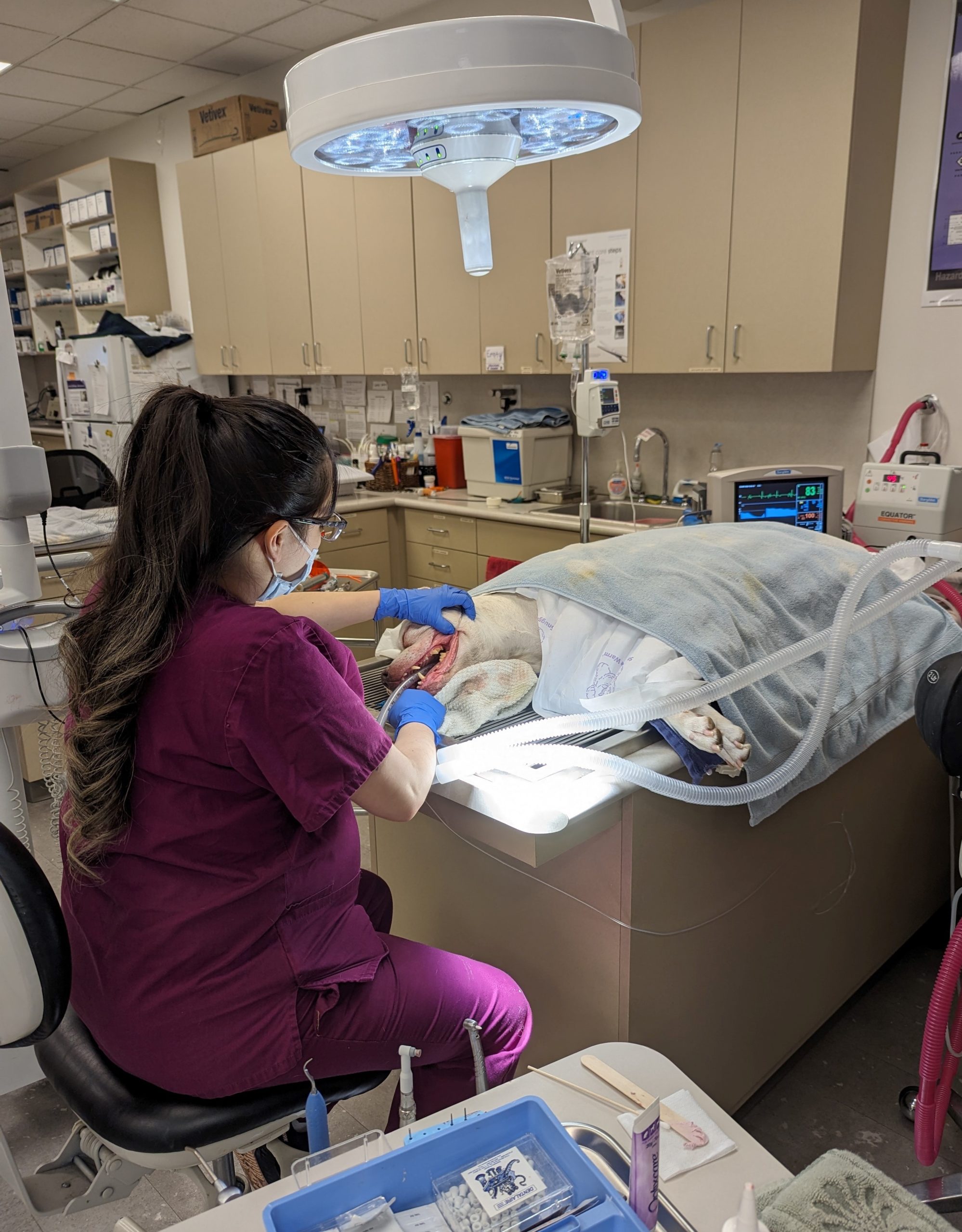Aurora Hills Animal Hospital does more than clean your pet’s teeth. We do a Complete Oral Health Assessment and Treatment. This 12-step process is the single most beneficial routine procedure that is performed on dogs and cats. Skipping just one step in this process leaves your pet at risk of having undiagnosed or untreated periodontal disease. We feel very strongly that your pet should get the best standard of care as follows:
1) Oral examination on the awake animal. We look at the face to check for swelling, pain, or eye abnormalities, all of which can indicate periodontal disease. We open the mouth to assess the temporomandibular joints. We examine the teeth and gums. Any visible tartar that is touching the gums is suspect for contributing to periodontal disease and must be removed.
2) Oral examination under general anesthesia. We examine individual teeth for mobility, fractures, malocclusion, and periodontal disease (we probe the gum/tooth interface looking for pockets in the gum tissue indicating loss of tooth attachment).
3) Plaque and tartar removal from the tooth crowns. Using calculus removing forceps, hand instruments, and power scaling equipment.
Tartar deposits are removed from all of the tooth crown surfaces. This step provides the most cosmetic benefit for the tooth, but provides NO treatment for periodontal disease!
4) Scaling, root planing, and curettage below the gum line.
- Root scaling: The removal of plaque and calculus from the root surface. This dislodges the bacteria which can be flushed away leaving the root healthier and with a better chance of recovery
- Root planing: The smoothing of roughened root surfaces by removing embedded tartar produces a clean smooth surface free of bacteria.
- Subgingival Curettage: The removal of the gingival pocket’s diseased surface. This promotes healing and reattachment of tissue to the tooth surface.

5) Polishing. Regardless of how careful we are during the scaling/curettage phase of teeth cleaning, minor defects of the tooth surface occur. Polishing smooths out the defects and removes the final plaque remnants.
6) Irrigation. With irrigation, diseased tissue and plaque are removed from the tooth pockets.
7) Fluoride is placed on dry teeth and allowed to remain undisturbed for at least one minute.
8) Post-cleaning examination and diagnostics. After cleaning, the teeth are examined individually to check for pockets in the gums and to examine the gums for retained calculus. Digital radiography is used to image all of the roots for fractures, abscesses, infections, tumors, etc.
9) Charting. The type and severity of disease of every tooth is charted in your pet’s permanent medical record.
10) Therapy to treat lesions noted above. This may include placement of concentrated antibiotic gels into gum pockets, acrylic sealing of fractured teeth, oral surgery to extract teeth, or referral to a boarded veterinary dentist for further care.
11) Home care instructions. Home care is the single most important procedure the owner can do to maintain oral health. If performed regularly, daily brushing will dramatically increase the interval between teeth cleaning appointments. The goal of dental home care is to remove plaque from tooth surfaces and the gum/tooth interface before it mineralizes into tartar, a process that occurs within a few days of a cleaning.
12) Follow-up progress visits are as essential as any of the preceding steps. The time between oral exams is based on the degree of disease and the level of home care. Some severe cases will need to be rechecked monthly, while minor cases can be checked every 6-12 months.

